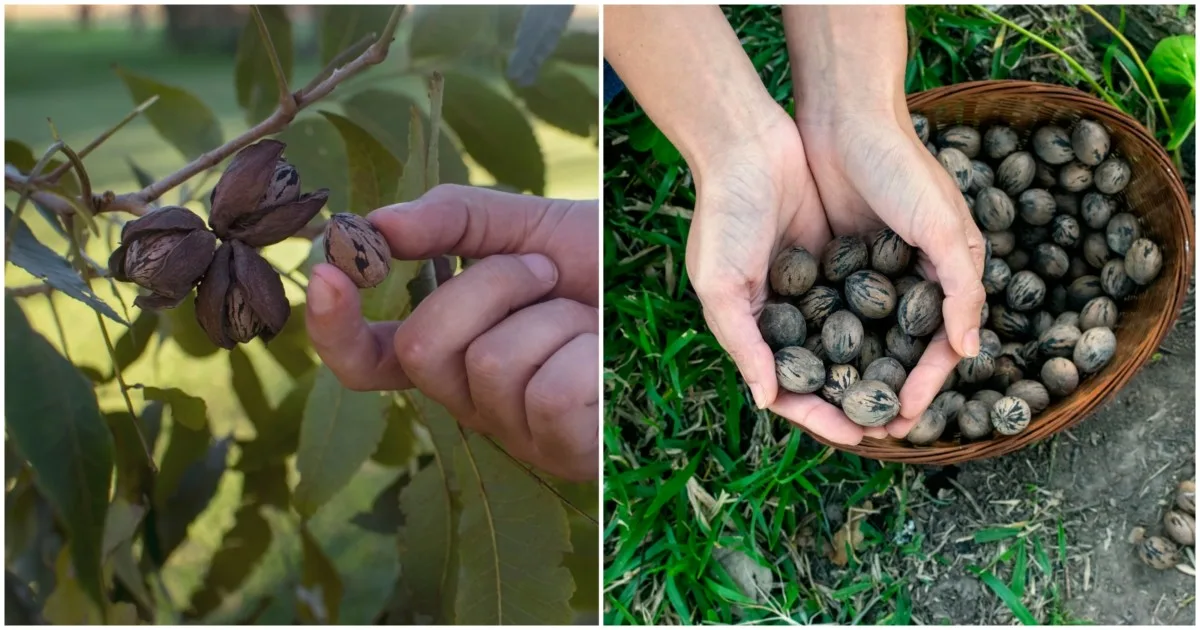
Growing trees in your garden is always a great idea. They can enrich your life in a huge range of ways, as well as sequestering carbon, cleaning the air, and supporting local wildlife.
But choosing the right trees for your garden is not always the easiest or most straightforward task.
If you get it right, and choose the right options for where you live, and for your own needs, you can reap the benefits for years to come.
When we think of planting trees in our gardens, fruit trees are likely to be the first things that spring to mind. But there are other trees that can provide an edible yield.
There are trees that you can grow for edible leaves, leguminous trees like the Siberian Pea Tree that give edible seeds, and, of course, there are nut trees.
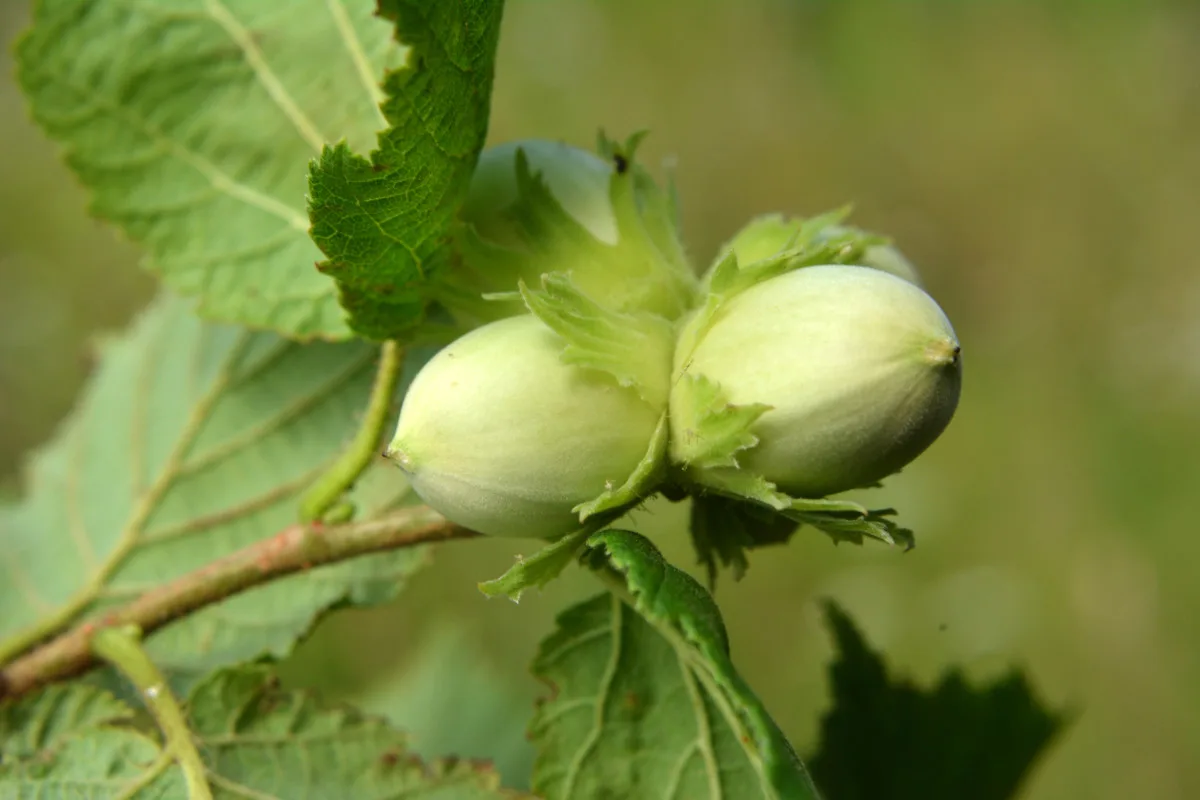
In this article, we’ll look at 25 different nut trees for different climates and conditions.
These trees with edible nuts (or seeds masquerading as nuts) should give you a place to start. They will help you select the best option or options for your particular garden.
Before we look at some of your potential choices, however, let’s take a moment to talk about how you should go about the process of choosing nut trees. And look at why you should consider growing nuts in your garden, wherever you live.
Choosing Nut Trees For Your Garden
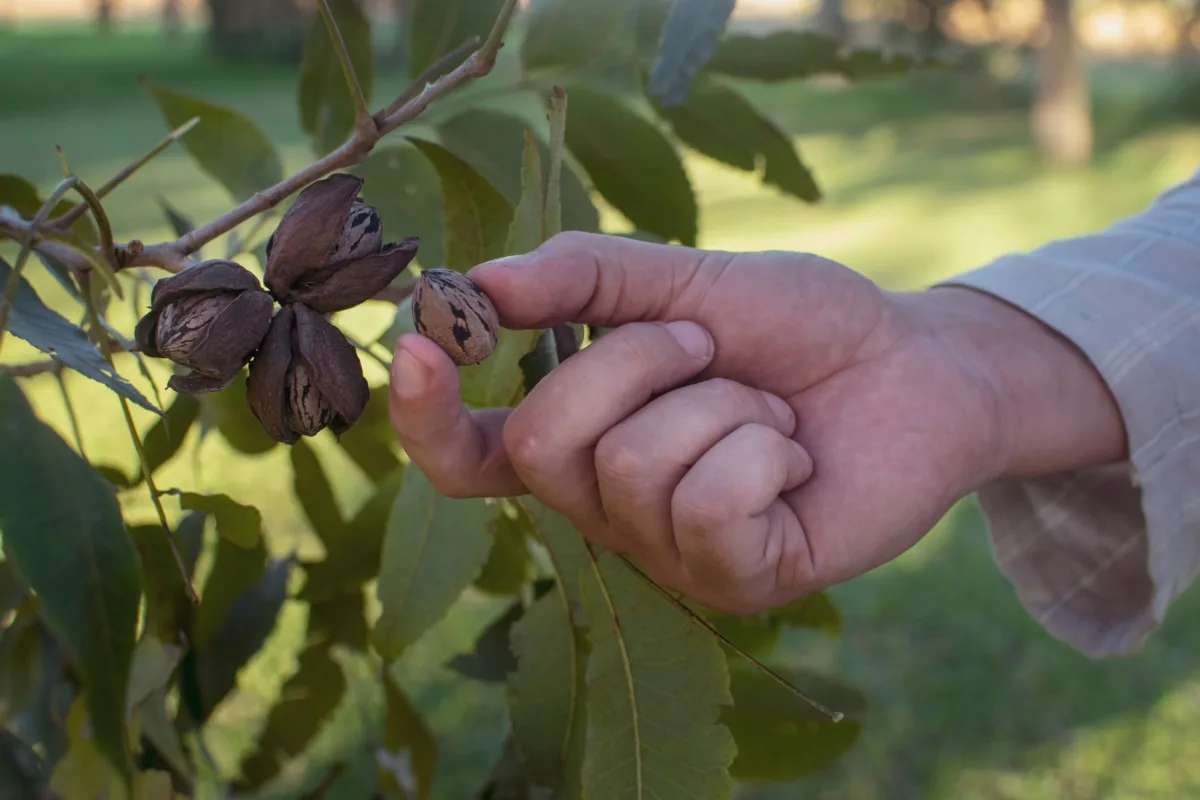
The primary consideration, of course, when choosing nut trees for your garden is your climate. Those who live in colder climate zones will generally have fewer choices since sub-tropical and tropical nuts will be out of the question.
That said, as you will discover from the list below, there are still a number of nut trees you can consider, even if you live in the coldest temperate climate zones.
You may be surprised by how many nuts you could consider, even with the limitations imposed by the climate where you live.
Micro-Climate and Conditions
Of course, you will also be limited as to which nut trees you can grow successfully by the micro-climate and soil conditions in your particular garden.
But one thing to bear in mind is that even with an unpromising site, you might still be able to grow certain nut trees in containers or undercover.
Native or Non-Native?
When choosing a nut tree for your garden, you should consider whether you would like to restrict yourself to trees that are native to your area. If you do, it is likely that you will be far more limited in the number of nut trees you can grow.
It is important, however, to consider native choices in addition to international ones, in order to create well-balanced ecosystems that support local wildlife.
I would recommend starting with native options before branching out to consider other options for edible nuts that might work well in your area.
Where I live, there are only a very limited number of native nuts. Hazelnuts are really my only option for a worthwhile edible yield. (Though pines and beech produce edible seeds.)
However, depending on where you live, you may have a much wider range of options, including many on the list below.
Once you have considered the limitations of where you live, there are also other things to think about.
You and Your Tastes and Requirements
For example, you should consider your own tastes (which nuts you might actually like to eat). If you are considering a commercial enterprise, you should of course think about the market. Which nuts are in demand in your area?
Now is a good time to think about choosing nut trees for your garden.
Once you have decided, you should be able to order bare root fruit trees for temperate climates to plant during the dormant period.
Why Grow Nuts in Your Garden?
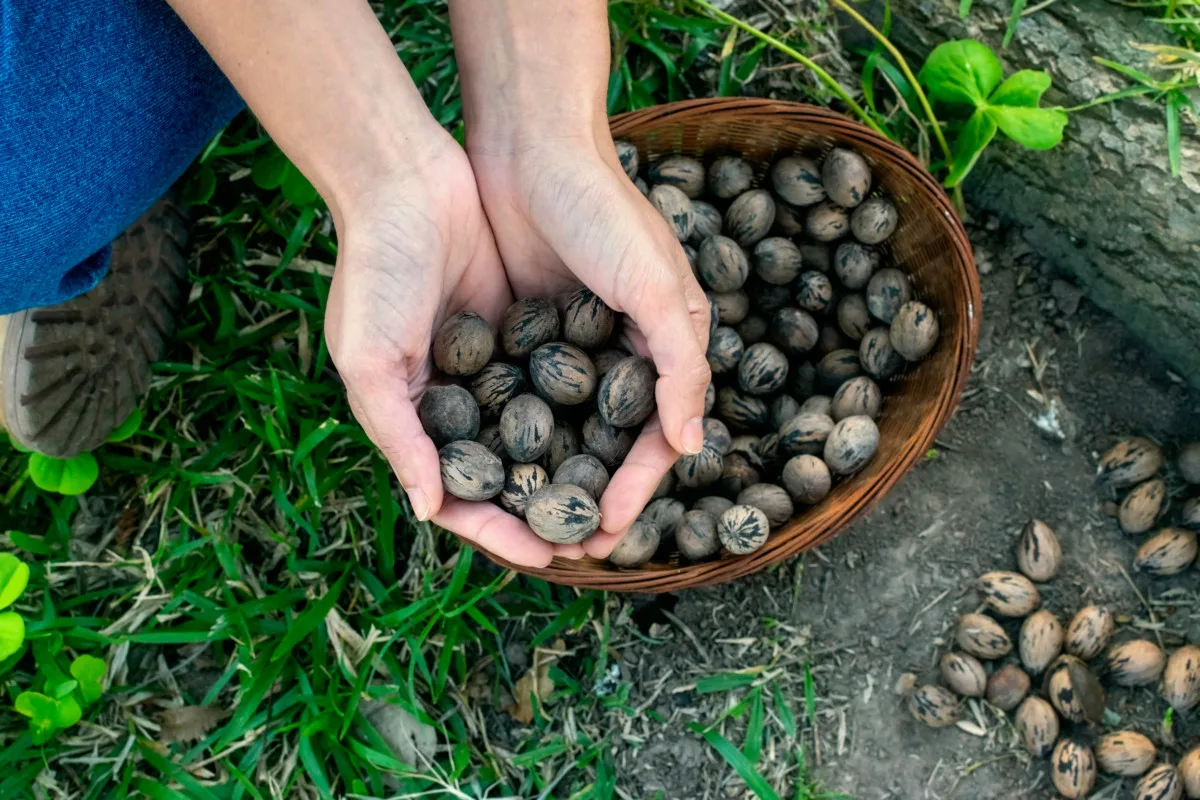
If you already grow a wide range of fruits, vegetables, herbs and flowers in your garden, branching out into nut trees could be a great way to go. Nuts provide protein, fatty acids and other nutritional elements that are not present in other home-grown food groups.
Growing nuts could be a good way to reduce your burden on the planet.
If you rear livestock on your homestead, you are already able to source protein without contributing to damaging factory farming systems.
But nut trees provide an alternative protein solution. Whether or not you are vegan or vegetarian, it can be a good idea to consider reducing animal-based protein in your diet.
And growing nut trees could enable you to do so. The nuts will be a healthy addition to your home-grown diet.
It is also worth noting that many nut trees can also provide other yields, such as wood for crafting, construction or fuel, for example. So they can be great value additions to your homestead.
Nut Tree Varieties to Consider
This list is by no means meant to be exhaustive but these 25 nut trees are amongst the most interesting options. And no matter where you live, you should find at least one option on this list that you could consider for your garden.
1. European Hazelnuts (Corylus avellana)
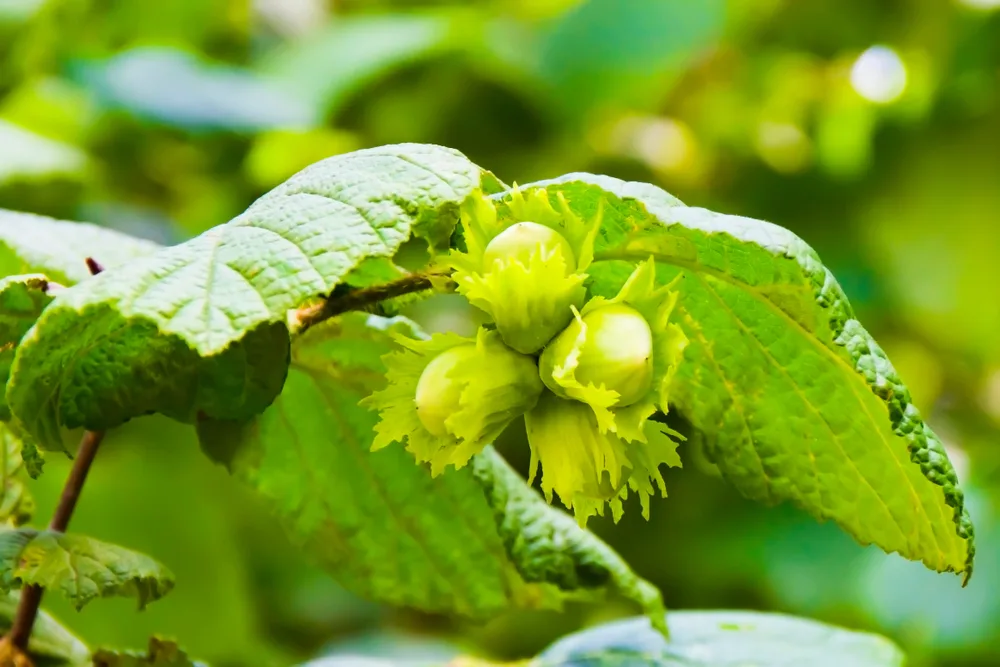
Hazelnuts are one of the very best perennial protein and oil crops for temperate climates. The genus includes a number of deciduous trees and large shrubs native to the different regions of the temperate northern hemisphere.
The common hazel is native to Europe and West Asia. It naturally grows in woods, especially on the slopes of hills.
This nut tree can be grown in USDA hardiness zones 4-8 and is not frost tender. It forms trees up to around 6m high and 3m wide, growing at a medium rate.
This is an extremely hardy tree that can cope well with a wide range of conditions and is a great choice for many European gardens.
The nuts, which mature in September or October, are excellent raw or roasted. However, squirrels and other wildlife think so too! So it can sometimes be a challenge to get to them before they are all eaten.
If protected, they can be harvested and have a range of culinary applications.
I consider hazel to be a great, sustainable landscape plant. It not only provides an edible nut yield but is also useful in a wide variety of other ways.
Hazel is great for attracting wildlife, makes great hedgerows, and provides useful wood for small items of furniture, inlay work, hurdles, wattle and basketry, and more.
It can be coppiced and so can be great in carbon farming/ carbon gardening and long-term garden, homestead or farm systems.
2. Giant Filbert (Corylus maxima)
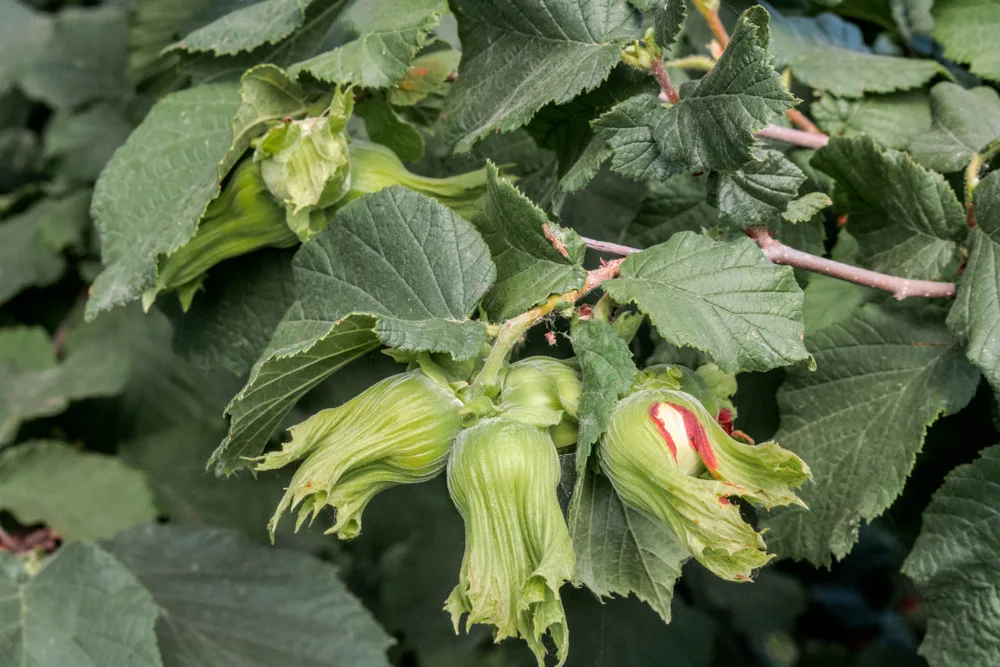
Along with the European hazel mentioned above, Corylus maxima is a parent of many cultivated forms of cob nuts and filberts.
This Corylus subspecies is native to S. Europe and W. Asia and typically grows to around 6m tall and 5m wide. The plant shares many characteristics with Corylus avellana but typically has larger nuts.
If growing hazel for edible nuts, hybrid types with Corylus maxima can be good choices.
3. American Hazelnuts (Corylus americana)
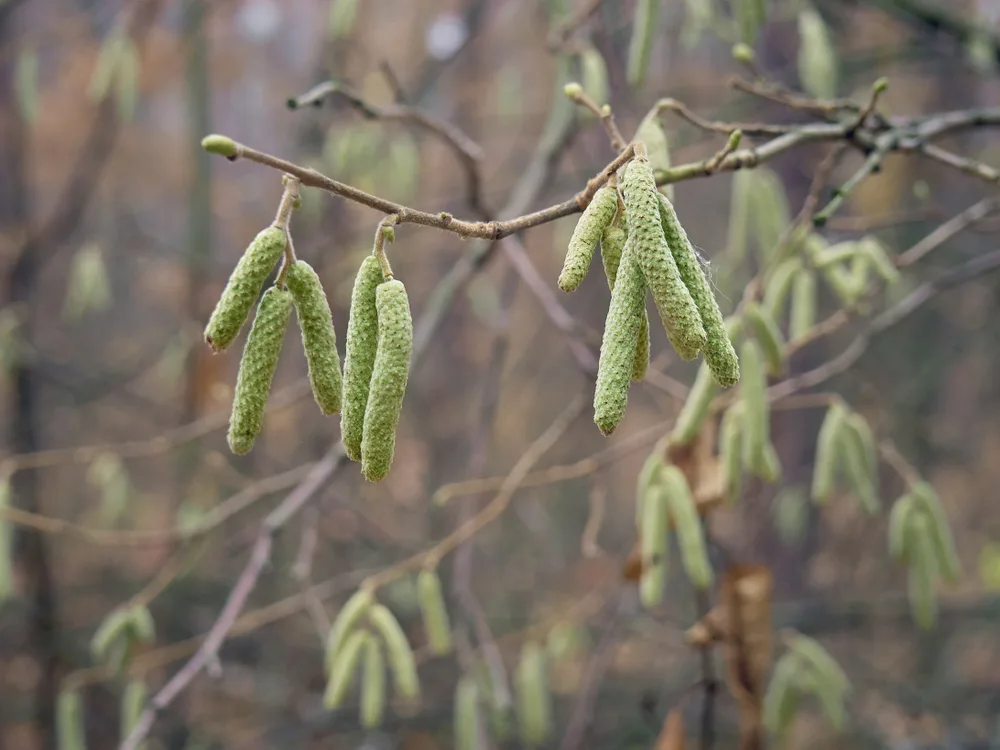
If you are in the US, another member of the same family to consider is Corylus americana.
This native hazel species have smaller nuts than cultivated varieties. But it is native to Eastern North America – Maine to Georgia, and west to Saskatchewan and Oklahoma.
This is also a deciduous tree but typically grows no taller than around 3m in height and width. This can also be grown in a wide range of conditions in zones 4-8.
In addition to offering many of the same advantages as European hazel, this small nut tree, or large shrub, can also be useful in a screening or windbreak hedge. And can work well in forest gardens or other edible, native planting schemes in North America (though rarely bares seeds in the UK or elsewhere).
There are also several other similar Corylus subspecies native to North America – such as Corylus cornuta, for example.
4. English Walnuts (Juglans regia)
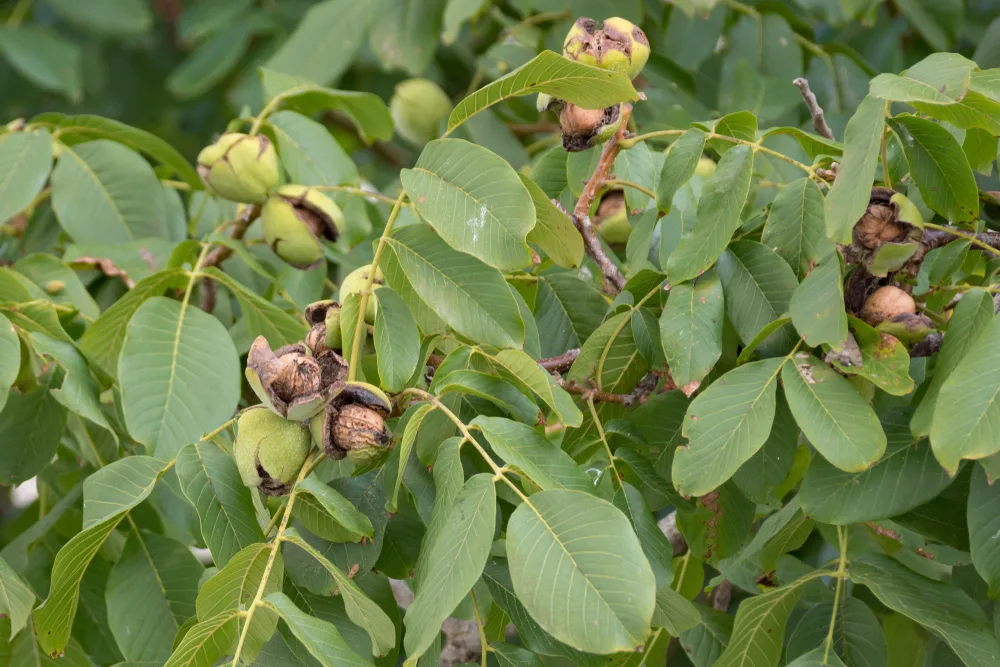
After hazels, walnuts are another of the most important and useful nut-producing trees in temperate climates.
One thing to note about walnuts is that they secrete juglone, which has an allelopathic effect (inhibitory effect) on many other plants when they are grown nearby.
However, they are extremely useful, not only for edible nuts but also for many other reasons. They are, for example, valuable timber trees.
Juglans regia, sometimes referred to as common walnuts (in the UK), English walnuts or Persian walnuts, grow in a range that covers Eastern Europe to North Asia.
This old world walnut tree species is widely cultivated across Europe, and has also spread to and is cultivated in other regions, from California to New Zealand and South East Australia.
This is a large deciduous tree that grows to 20m x 20m at a medium speed. It is self-fertile, and pollinated by wind.
In addition to being cultivated for its edible nuts, it is also grown as an ornamental or shade tree in large parks and gardens, in forest gardens, and for other landscaping purposes.
5. Black Walnuts (Juglans nigra)
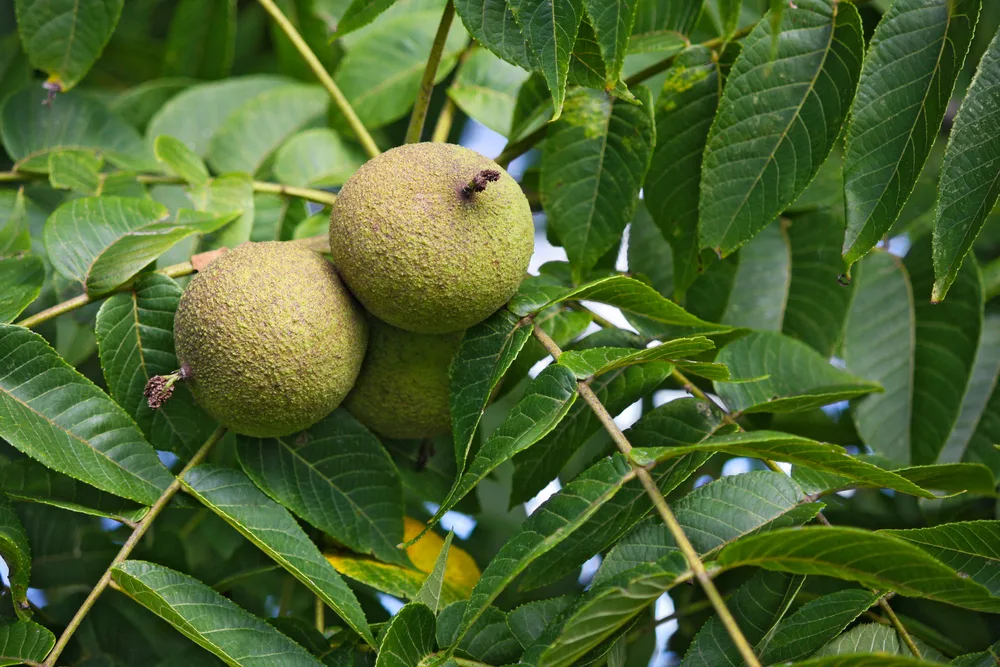
Another important walnut species is the black walnut. This nut tree is native to Eastern North America, from Massachusetts to Florida, and west to Minnesota and Texas.
It is a deciduous tree that grows up to 30m tall and 20m wide at a medium rate.
The black walnut thrives in areas with deep, well-drained loam, plenty of sun, and shelter from strong winds. It will do best in areas with an annual rainfall of between 30 and 130cm, and temperatures that range between 45 and 65 degrees F.
Two or more trees should be planted for the best nut production.
Black walnut is one of the best trees to choose from if you are interested in making money from trees in the US.
6. White Walnuts/ Butternuts (Juglans cinerea)
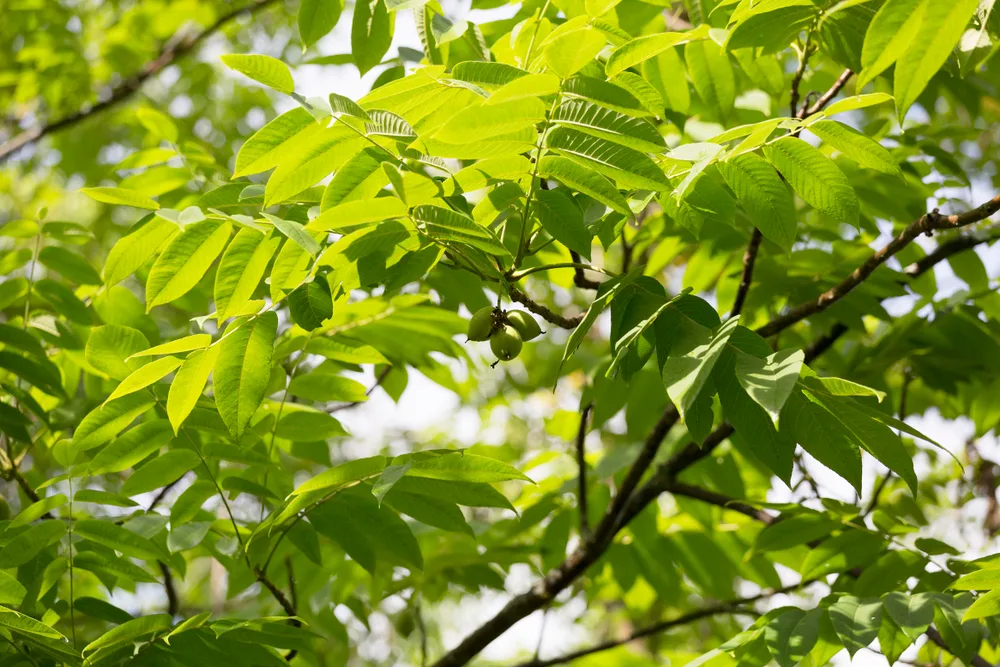
Another important walnut variety is the white walnut or butternut. This variety is found in Eastern North America from New Brunswick to Georgia, west to North Dakota and Arkansas.
It can be grown in zones 3-7, and forms large trees up to around 25m in height and 20 m wide.
White walnuts are another edible nut, that also yields an oil. And they were also used medicinally in a number of ways by several different North American Indian tribes.
The most cold-resistant of walnut varieties, this tree can tolerate temperatures down to around minus 31 Fahrenheit in North America when fully dormant. But does require around 105 frost free days in order to ripen a crop.
7. Heartseed Walnuts (Juglans ailantifolia)
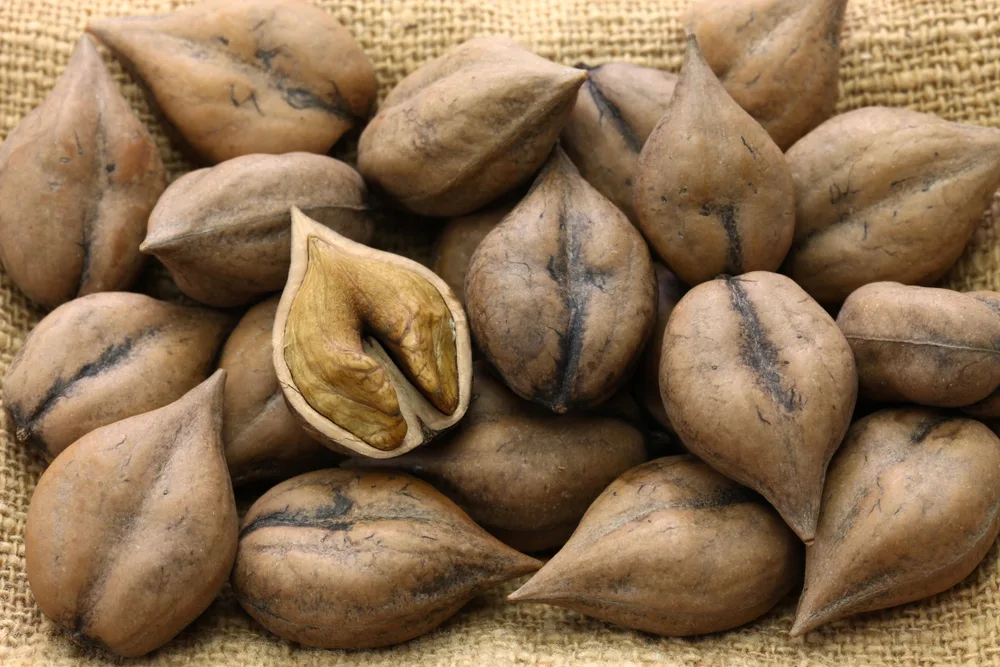
Heartseed walnuts are native to East Asia and Japan. They can be grown in zones 4-8.
They grow at a medium pace and reach an eventual size of around 20m tall and 15m wide. Juglas ailanthifolia cordiformis has a thinner shell and better tasting nut than other members of this genus.
8. Buartnuts (Juglans cinerea x Juglans ailantifolia)
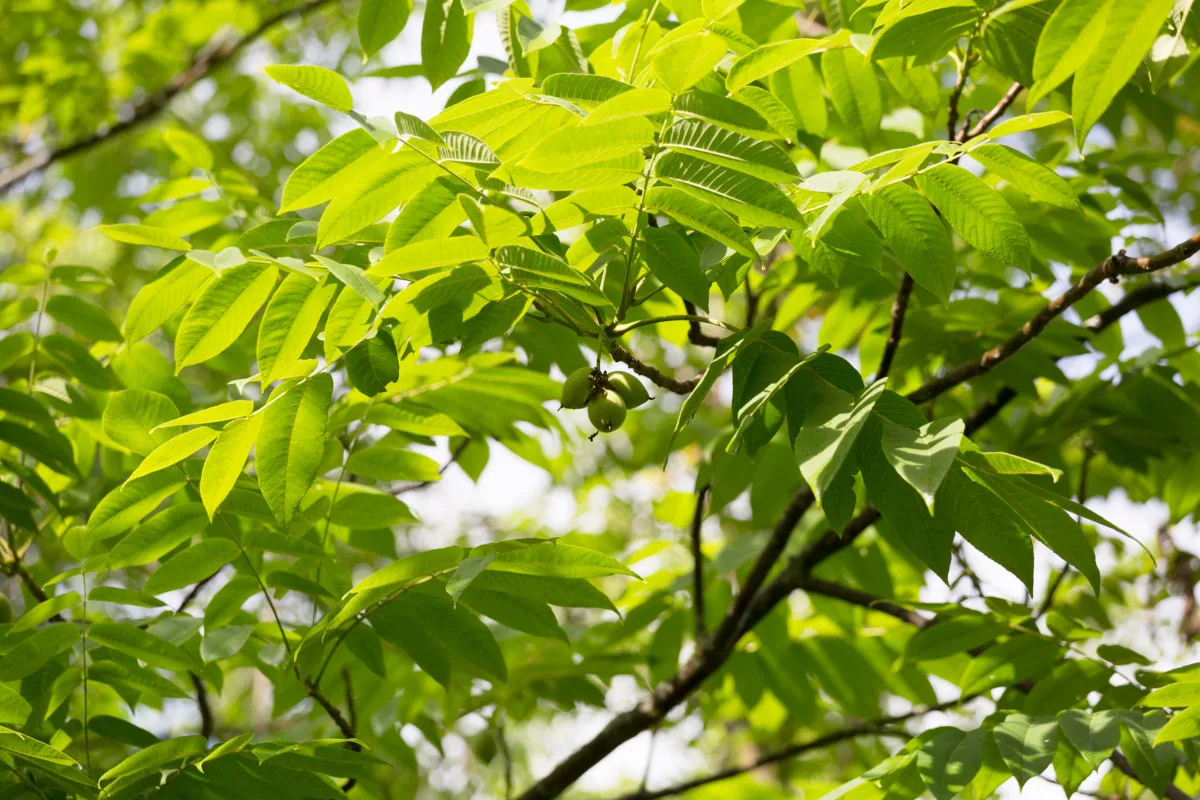
Buartnuts are a cultivated hybrid of Juglans cinerea and Juglans ailantifolia cordiformis. These trees also grow to around 20m in height and can also be grown in zones 4-8.
Buartnuts have thin shells and are prized for their flavor and the edible oil that can be derived from them.
This hybrid has the best qualities of each parent. It has the aromatic kernel flavor and superior climate adaptability of J. cinerea, but like its other parent, is better looking, and has higher yields.
9. Manchurian Walnuts (Juglans Mandshurica)
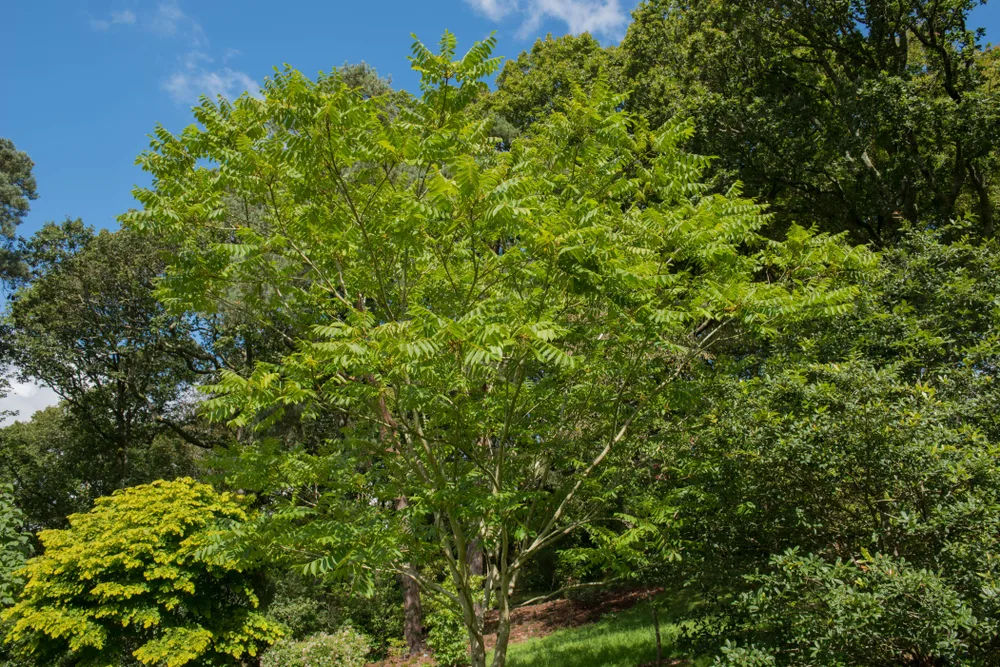
The Manchurian walnut, native to E. Asia, is another walnut type that can be considered for zones 4-8 in the US.
It too will grow to an eventual height of around 20m and produces edible weeds. However, the kernels can be somewhat difficult to extract because the shell is thick.
However, this is a good choice for colder climates and is sometimes used as a walnut rootstock to give greater cold resistance in severe cold areas.
10. California Walnuts (Juglans hindsii)
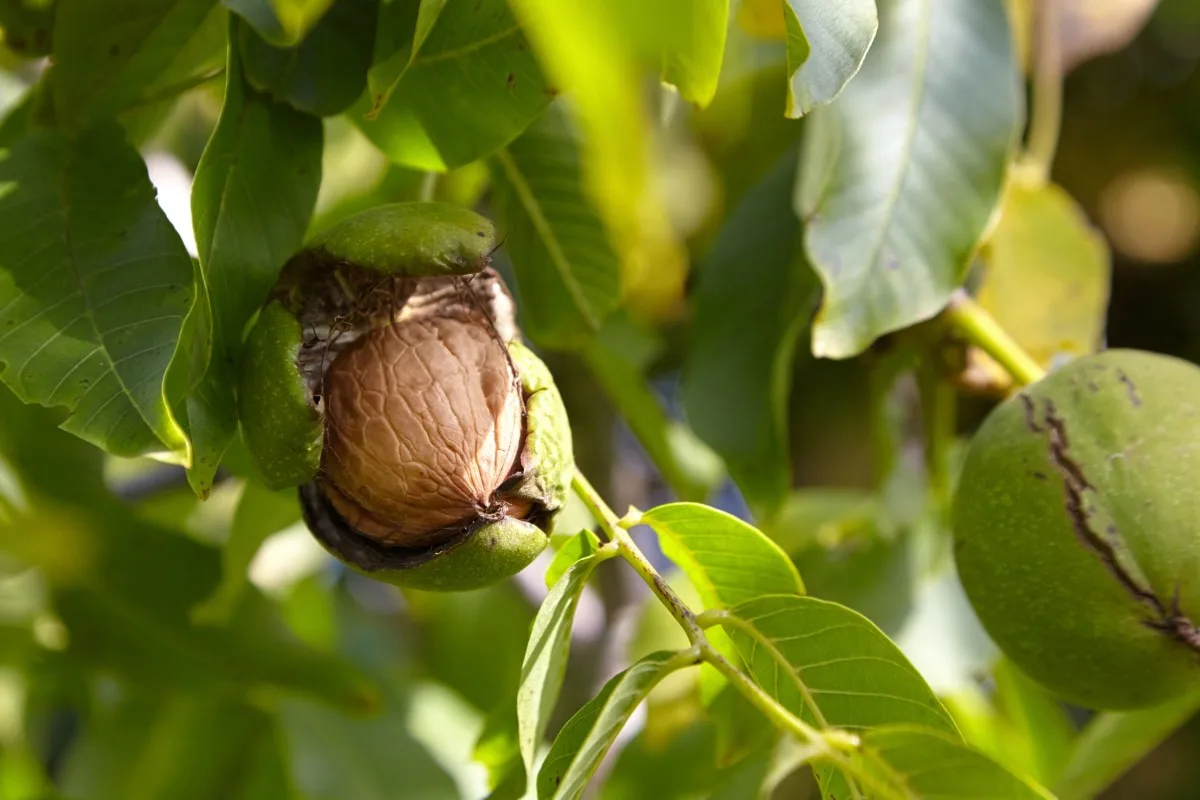
Juglans hindsii, also known as California walnuts, Hind’s Black Walnut or Paradox hybrid walnut grows in South ~Western North America and California.
It is suitable especially for zones 8-9. This walnut tree is somewhat smaller, growing to around 15m in height. It prefers moist soil, though can tolerate a degree of drought.
The seed is small, with a thick shell, but has good flavor. This is often used as a vigorous and disease-resistant rootstock for J. regia in southwestern North America.
11. American Chestnuts (Castanea dentata)
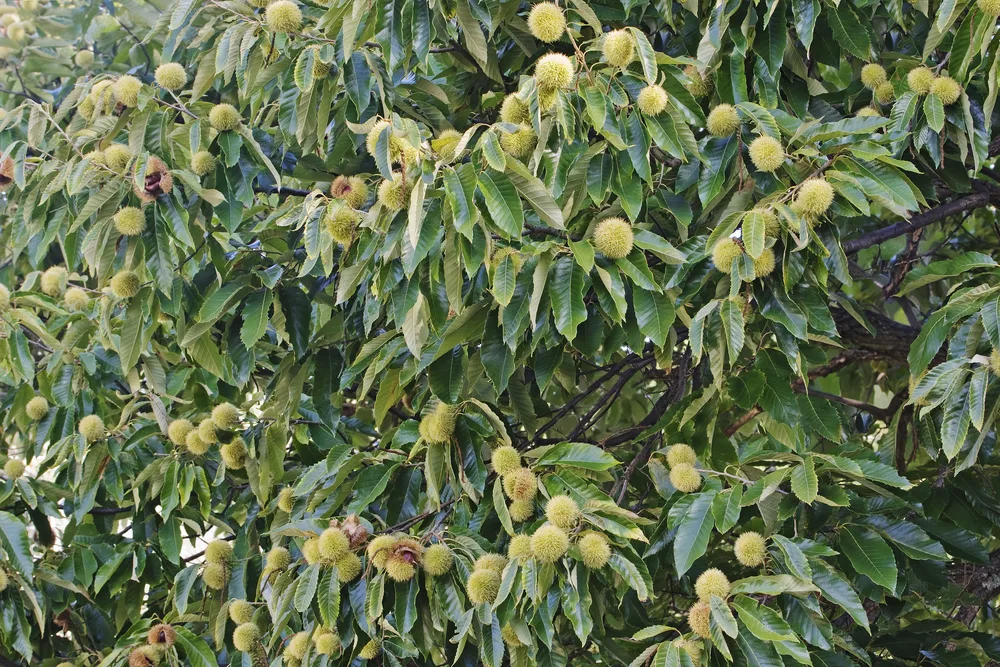
The American chestnut was once considered to be one of the most important forest trees in its range.
Sadly, chestnut blight devastated North America’s chestnut forests, and between 3 and 4 billion chestnut trees were destroyed in the first half of the 20th Century.
Very few mature specimens of this tree still exist within its historical range, though there are many attempts at revitalization. Some involve breeding blight-resistant varieties, some are backcrossing to try to restore these trees to their original habitat.
Blight-resistant hybrids are sometimes bred with Chinese chestnuts (below).
This is another profitable nut tree to consider, since it can be grown on marginal land, and yields 2,000-3,000 lbs of nuts per acre, as well as a high-value timber at maturity.
12. Chinese Chestnuts (Castanea mollissima)
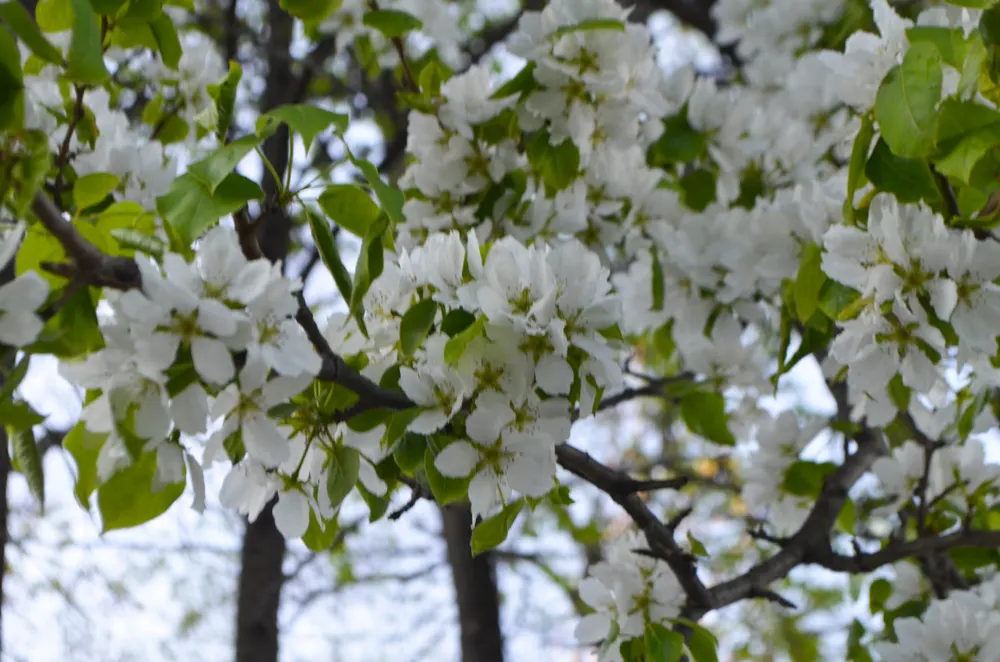
Native to China and East Asia, this type of chestnut grows to around 25m in height.
It is very tolerant of a relatively wide range of conditions, and whether grown as is, or hybridized with other Castaneas, can be a very useful tree with superior seeds.
It succeeds in most relatively dry soils, and once established, is very drought tolerant and can cope with a wide range of conditions. (US- zones 4-8).
13. Sweet Chestnuts (Castanea sativa)
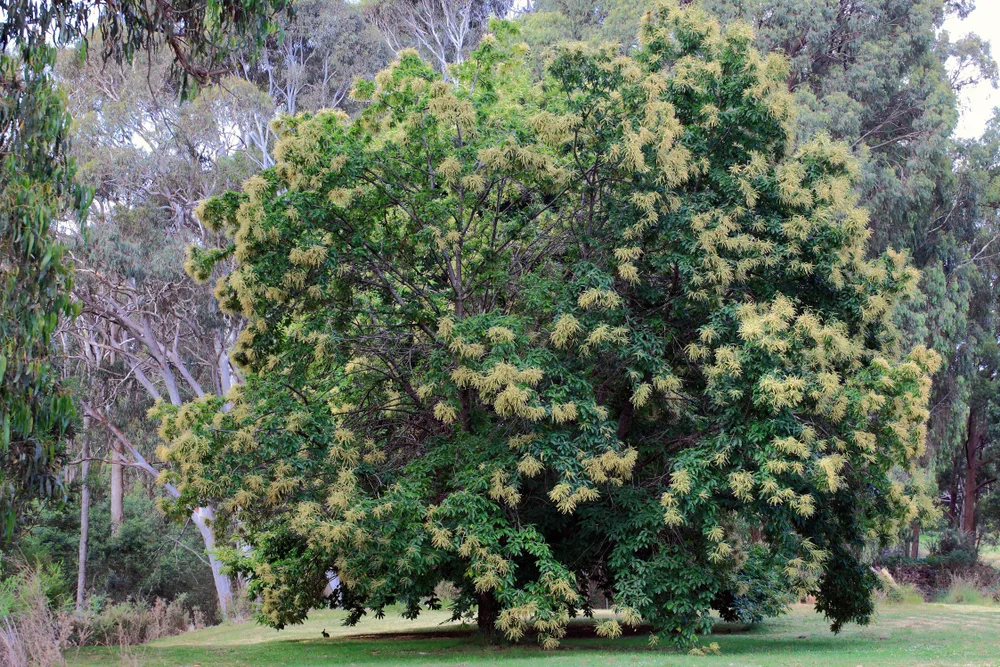
In Europe, the important chestnut tree is Castanea sativa. Often, the chestnuts sold in North America around Christmas time and ‘roasted over an open fire’ are now of this variety.
In Europe, and the British Isles, this is one of the most important nut crops, with great edible potential and a huge range of other uses.
It grows in zones 5-7, and can cope with a wide range of soil conditions, including nutritionally poor, and very acidic soils. It can tolerate some drought, and also maritime exposure.
‘Marron de Lyon’ and ‘Paragon’ produce fruits with a single large kernel (rather than 2 – 4 smaller kernels). So varietals such as these are preferred for commercial production.
A hybrid of Castanea sativa x crenata, ‘Marigoule’ is a good choice if only one tree can be grown since this is a partly self-fertile cultivar.
14. Japanese Chestnuts (Castanea crenata)
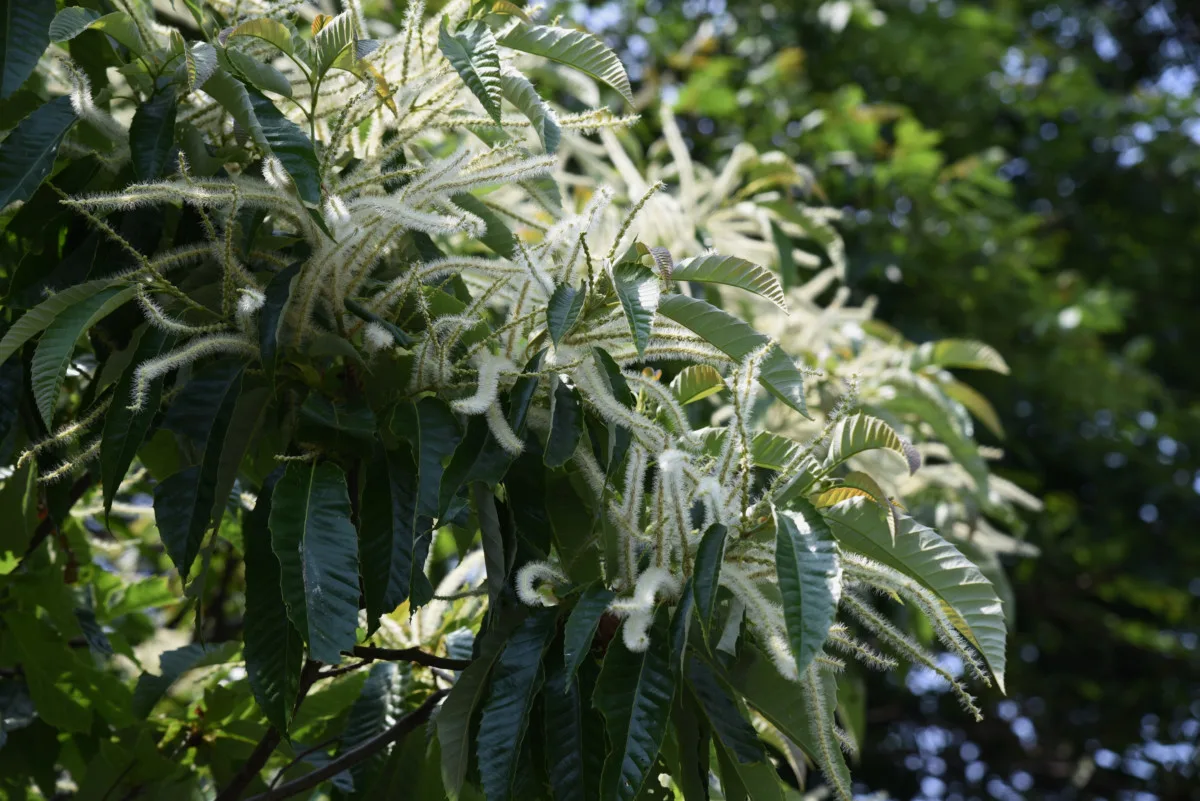
Native to Japan and East Asia, these can be grown in zones 4-8. These smaller deciduous trees from around 9m in height.
It is cultivated for its edible seed in Japan. Though its flavor is said to be inferior to other chestnuts.
Sometimes, it is also cultivated in North America due to its reasonably good resistance to chestnut blight and is also occasionally planted as a timber tree in Southern Europe.
15. Chinquapin (Castanea pumila)
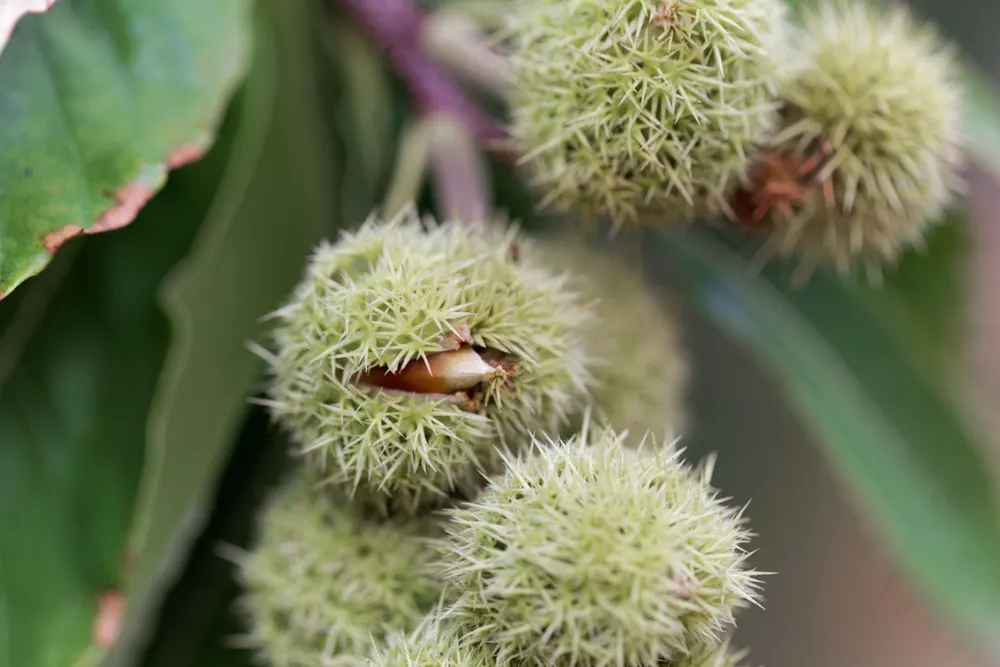
This large shrub or small tree is another member of the chestnut family, usually referred to as Chinquapin.
It grows to around 4m in height at a slow rate. It is found in Eastern North America, New Jersey and Pennsylvania to Florida, Missouri and Texas. (Zones 4-8).
Very acceptable when eaten raw, this has a nice nutty flavor said to be superior to sweet chestnuts, though the seed is quite small, about half the size of C. dentata.
16. Bladder Nuts (Staphylea trifolia/ Staphylea pinnata)
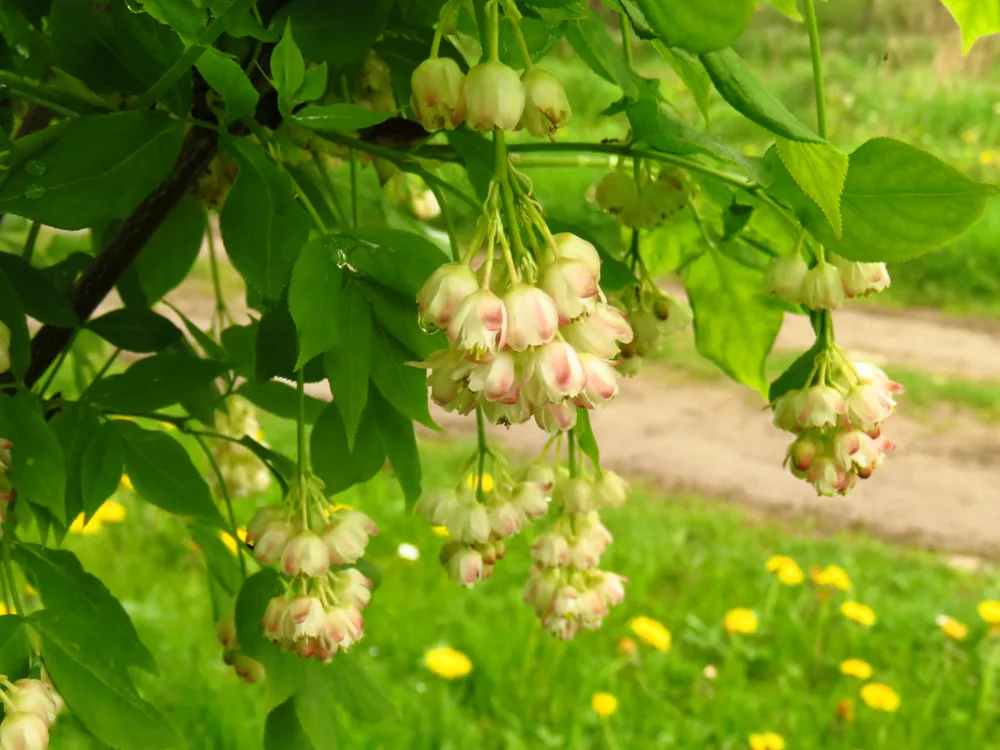
The bladder nut found in Europe, Staphylea pinnata, is a deciduous shrub or small tree which grows to around 4.5m high and wide.
The seeds are eaten raw and the taste is said to resemble that of pistachios. These can cope with a wide range of soil conditions, as long as conditions are not too dry, in zones 5-9.
American bladder nut is found in Eastern North America, from Quebec to Georgia, west to Nebraska and Kansas (zones 4-8).
It is just slightly smaller in size than the European one, growing to around 4m in size.
17. Hickory (Carya Ovata)
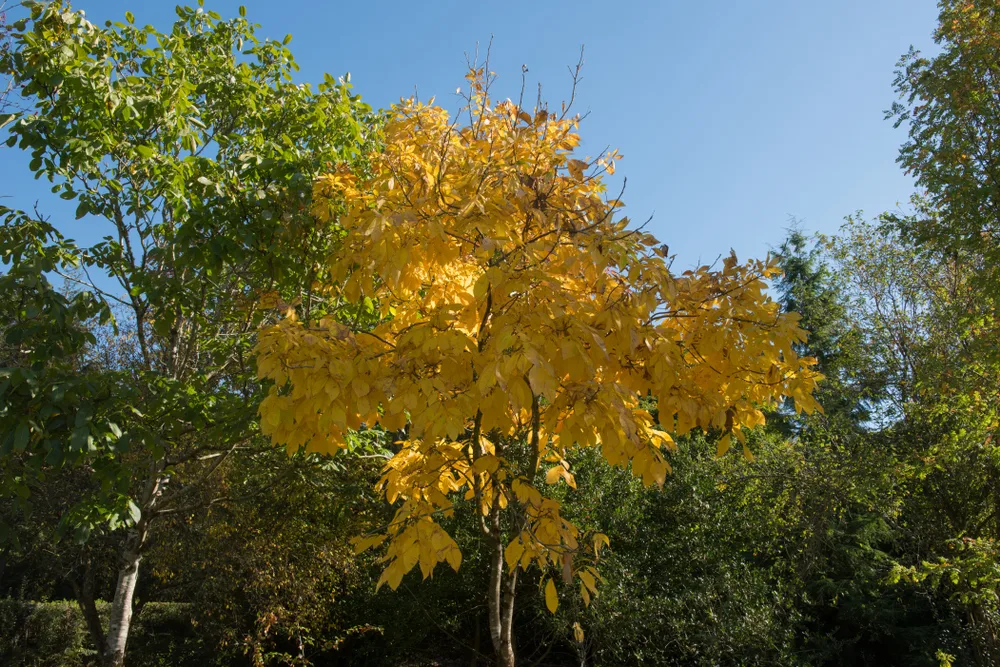
Hickory is another key nut tree in North America. And is another top choice for zones 4-8.
It is found across Eastern North America, from Quebec to Florida, and west to Ontario, Kansas and Texas. Shagbark hickory grows to around 30m tall and 15m wide at a slow rate.
The seed of this nut tree is enjoyed raw or cooked and is said to be sweet and delicious. The shells can be thick and hard, but there are certain cultivars with thinner shells.
The trees can also be tapped for a sweet sap that can be made into a syrup, and hickory is also a wood of excellent quality, which can be used for construction and crafts, as well as for charcoal or as fuel.
There are also a number of other hickories with edible nuts that could be considered in zones 5-9.
18. Pecans (Carya illinnoinensis)
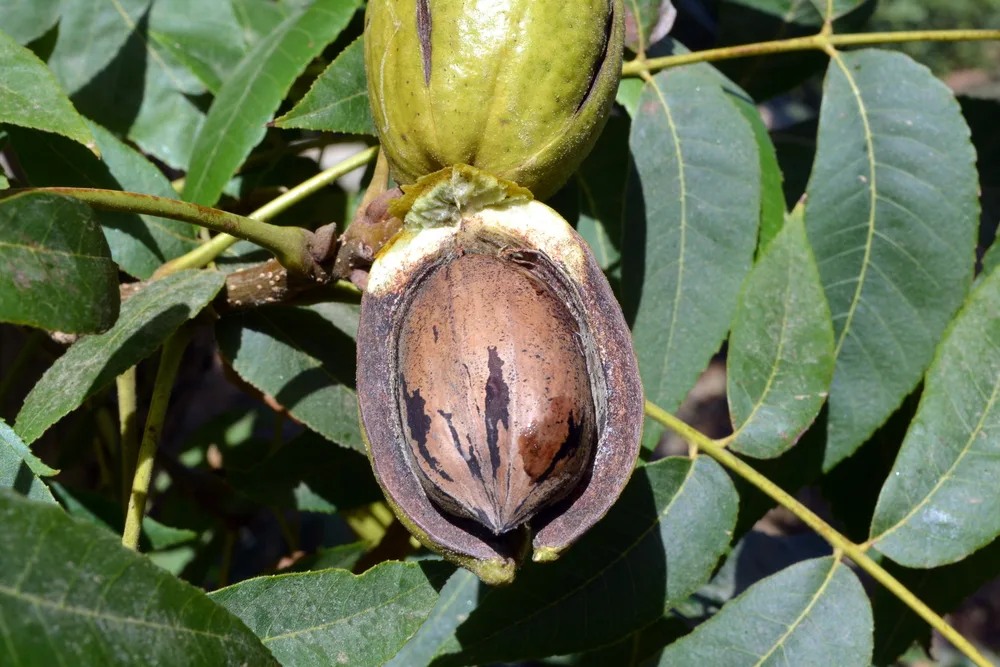
Pecans are typically grown in zones 5-9, especially in the much warmer climate zones in southern North America. This pecan is one with the broadest potential in cooler climate zones (usually down to zone 5).
The trees are large, growing up to 50m tall at a medium rate. Pecans are particularly sweet and tasty and are eaten both raw, and cooked in a range of recipes.
Reasonably hot summers are required in order to fruit and fully ripen their wood, though they are said to be hardy to zone five.
In North America, however, a number of cultivars have been bred which can be grown surprisingly far north. ‘Carlson 3’ for example, is being trialed in Canada.
Other colder climate pecan cultivars include ‘Green Island’, ‘Mullahy’, ‘Voiles 2’, ‘Gibson’ and ‘Devore’.
19. Yellowhorn (Xanthoceras sorbifolium)
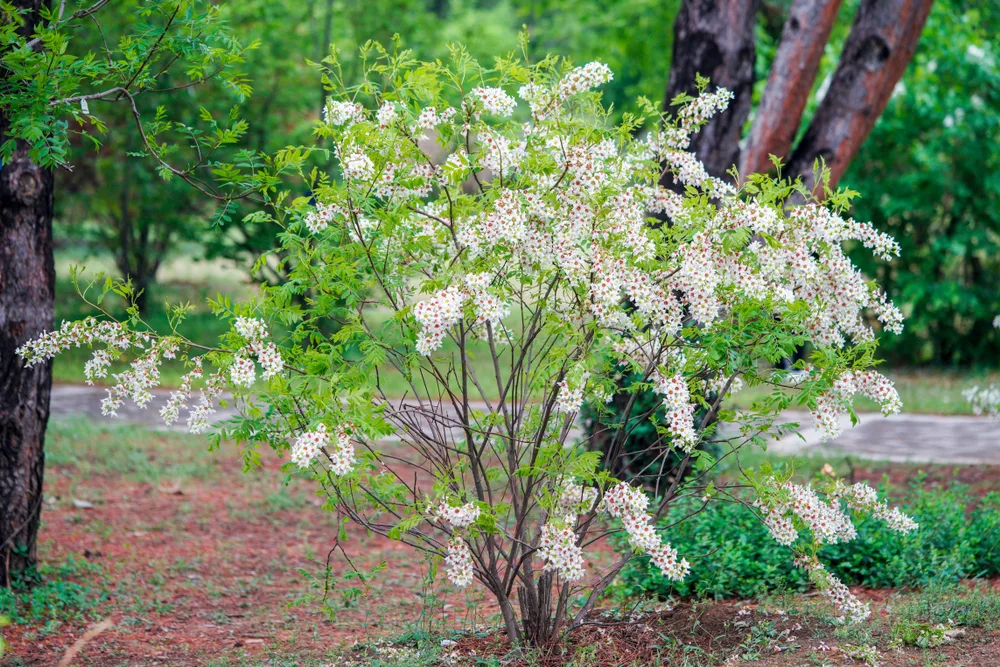
Native to East Asia- Northern China, Yellowhorn is a more unusual option that could be considered in zones 4-7.
It is a deciduous shrub or small tree with edible seeds, around the size of peas, which resemble sweet chestnuts in taste. These are usually boiled. The flowers and leaves can also be cooked and eaten.
They grow best in well-drained, fertile soils in areas with warm summers and dry springs without late frosts.
20. Pine Nuts (e.g. Pinus siberica, Pinus cembra, Pinus edulis, Pinus koraiensis)
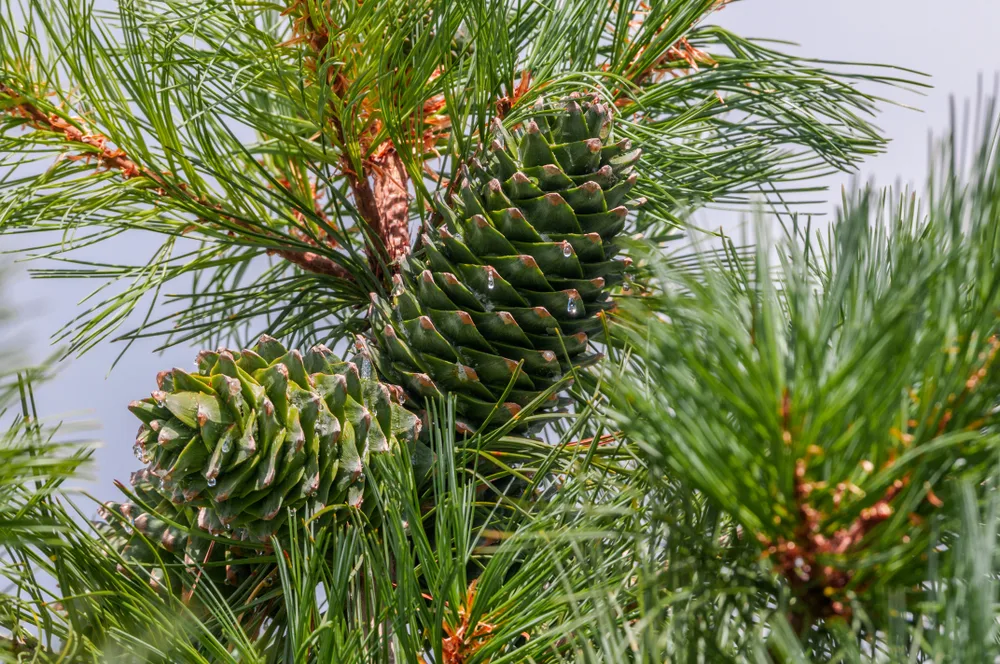
A number of pine species can be cultivated for their edible seeds. Pinus siberica, Pinus cembra, Pinus edulis, and Pinus koraiensis are just some of the options that can be considered.
The last of this list is particularly useful in colder climate zones, where other pines don’t always produce nuts that are of a size worthwhile for harvesting.
21. Almonds (Prunus Dulcis)
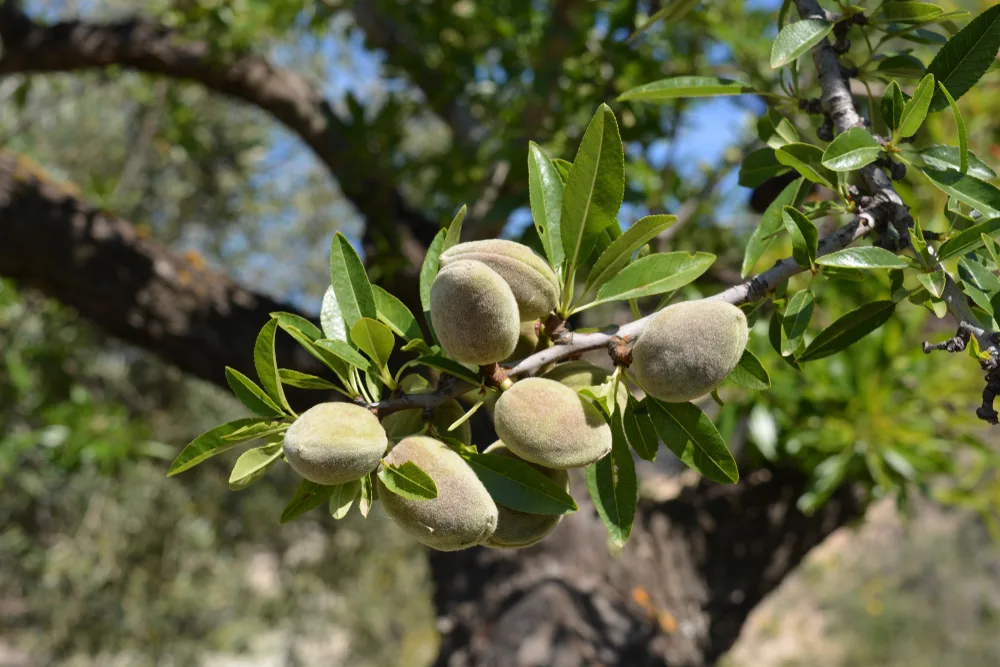
Almonds are, of course, another common and important type of nut tree to consider growing in a garden. Sweet almonds are grown in zones 6-9 and have a delicious flavor.
They can be eaten raw or cooked in a wide range of different ways. In addition to being an edible crop, almonds are also of medicinal benefit, and the trees also have a range of other useful yields.
These trees do best in a sunny position, in areas with a Mediterranean climate with a clear distinction between summer and winter. They thrive in a well-drained yet moisture-retentive loamy soil.
Better yields can be achieved if at least two almond trees are grown.
22. Russian Almonds (Prunus tenella)
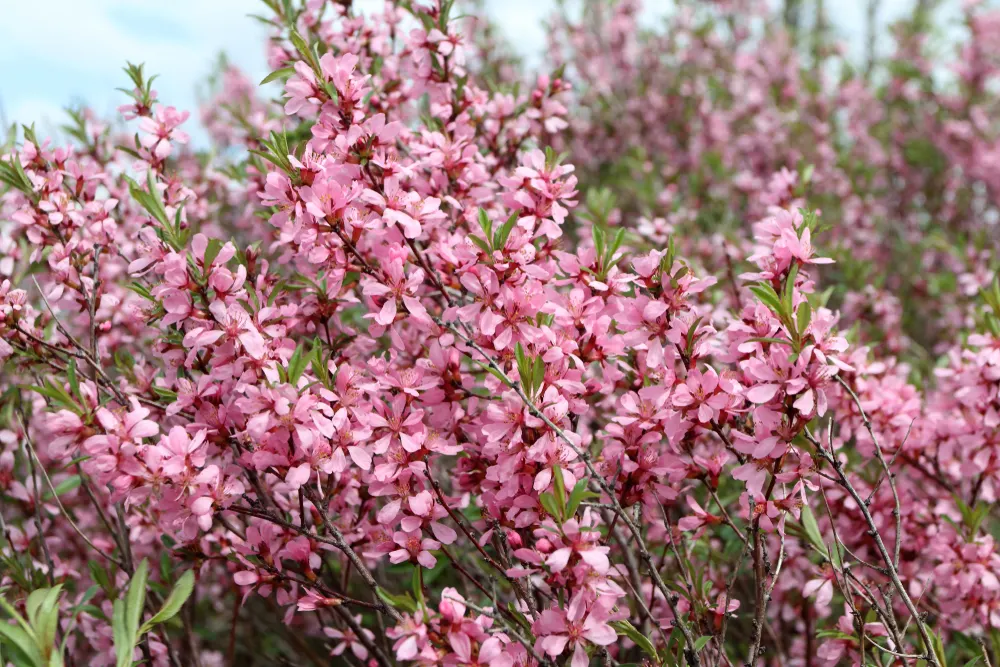
Russian almonds are shrubs that produce almonds that are often bitter, and when very bitter, they should not be eaten.
However, there are certain cultivars that produce sweet almonds, and these can be an interesting alternative to Prunus dulcis sweet almonds in colder climate zones.
23. Pistachios (Pistacia vera)
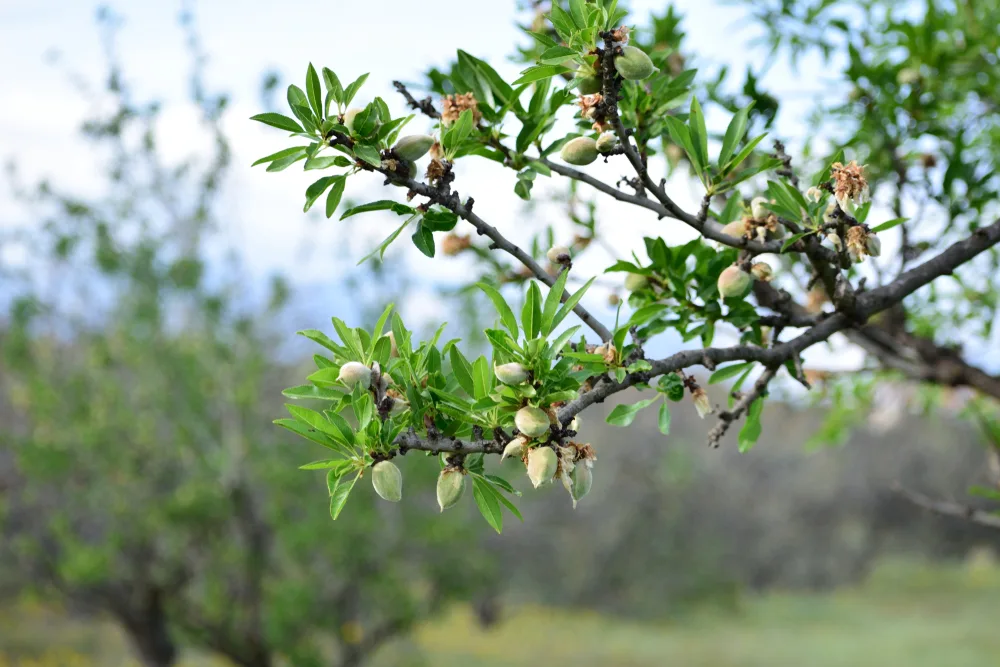
Native to Western Asia, Pistachios can be grown in USDA planting zones 7-10. They do best in a sunny position, with well-drained soil, and can tolerate some drought.
Widely considered to have great flavor, the pistachio nut can be eaten raw, or cooked, and has a mild and pleasing taste. They do best in areas with long, hot summers.
24. Macadamia Nuts (Macadamia ssp.)
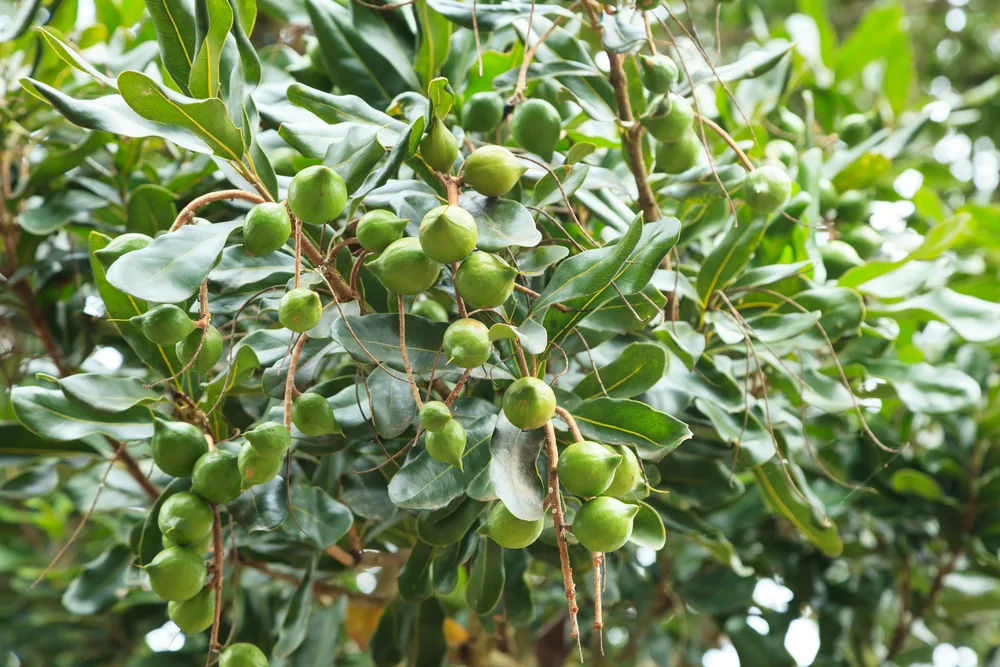
Native to Australia, the macadamia nut was introduced to Hawaii and can also be grown in zones 9-12 in some small areas of California and Florida.
While it will usually not be possible to grow it in most of the US, nor in Europe, in an appropriate climate zone, it could be another interesting option to consider.
It grows 10m tall and 10m wide at a slow rate and produces delicious creamy dessert nuts.
25. Cashews (Anacardium occidentale)
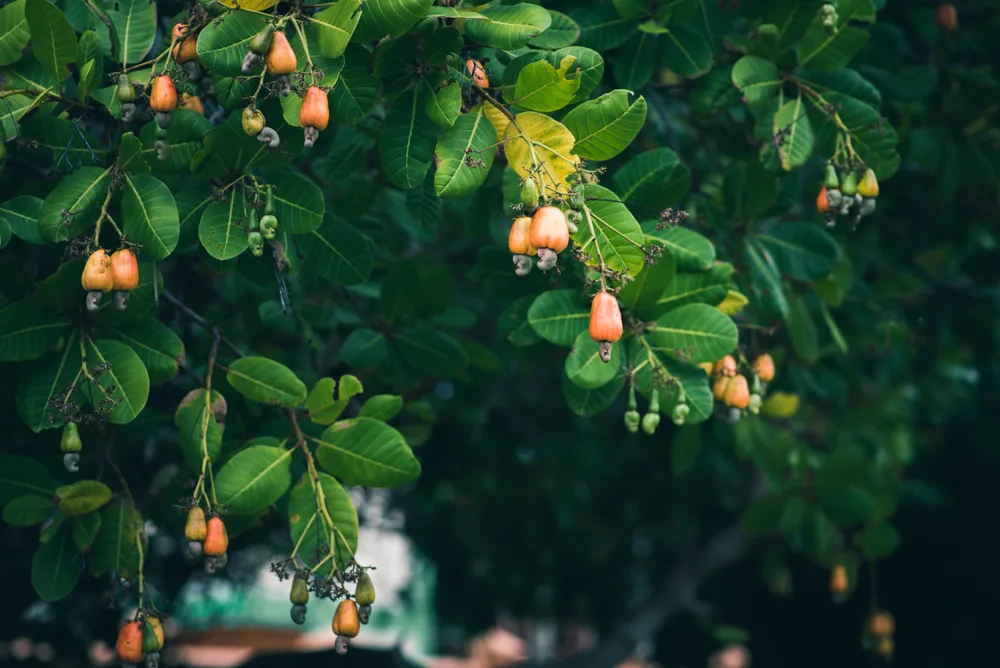
A subtropical and tropical tree, the cashew grows well in hot, semi-arid, frost-free climates, and fruits well with an annual rainfall of 500-900mm.
It will do best when there is a pronounced dry season of 3-4 months. Even though the US consumes 90% of the world’s cashews, cultivation of this nut is restricted to the extreme south of Florida, Hawaii and Puerto Rico.
However, with certain caveats, it may be possible to consider cultivating cashews in an indoor garden in certain circumstances.
These are not the only nut trees that can be cultivated to eat. But the above list should give you a better idea of the nuts that you might be able to grow where you live.

Get the famous Rural Sprout newsletter delivered to your inbox.
Including Sunday ramblings from our editor, Tracey, as well as “What’s Up Wednesday” our roundup of what’s in season and new article updates and alerts.

